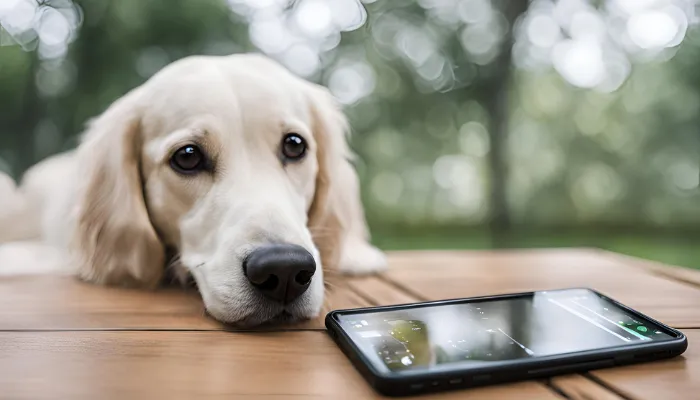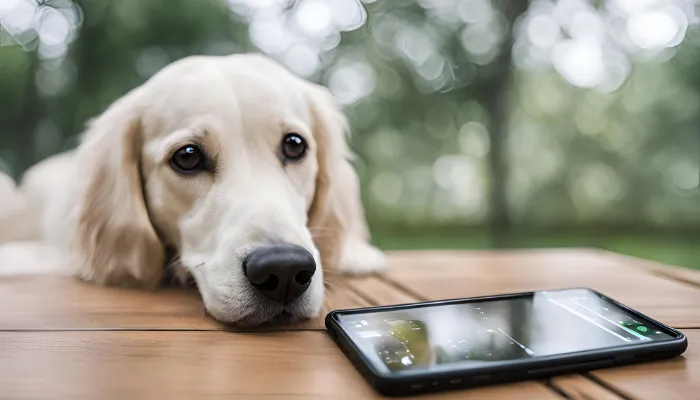Are you asking yourself, How Do You Say “Hi” in Dog Language? Every living creature has its own distinct way of greeting others and that includes dogs. Understanding them enhances relationships with your pets, increases the bond shared, and improves overall communication.
Dogs do not say hello like humans; instead, they use body language, vocal sounds, and even scent. In this case, a dog translator might help you interpret those gestures better. The objective of this article is to highlight how dogs say hello and how you can effectively say “hi” in their languages.

How to Say “Hi” in Dog Language?
How Do You Say “Hi” in Dog Language? Now that we know how the dog’s language works, here is how you can greet the dog:
1. Approach Calmly and Respectfully
Dogs appreciate a gentle as well as an effective approach. Here are some of methods you can use:
- Initially, do not engage in direct eye contact because this can be taken as a form of confusing challenge.
- Allow the dog to approach where you can meet him instead of trying to reach to him before hand
- Avoid sudden electric movements, instead, ensure to move slowly.
2. Use a Soft, Friendly Tone
When trying to greet a dog, the tone you use is very crucial. Try out these options:
- Use an energetic yet calm voice for talking.
- Use positive short statements such as “hey there!!” or “good boy/girl.”
3. Offer Your Hand for Sniffing
Offering your hand for sniffing can be effective when trying to earn the pets trust. Follow these guidelines:
- Try extending your arm slowly and have your palm rest.
- Allow the dog to sniff and choose whether or not to interact.
- Refrain from sudden petting until the dog seems at ease.
4. The Dog’s Reaction To You
These are what you look out for in order to gauge dog’s behavior or comfort levels:
- Relaxed body and tail wagging = Friendly and comfortable.
- Tensed body with a low tail or backing away = Unsure or hesitant.
- Growling and bare teeth = Feeling threatened; needs space.
5. Accept Their Greetings
When the dog responds positively to your greeting, you can now:
- Calmly pat them on the shoulders or chest.
- Use a relaxed happy voice to encourage friendly behavior.
- If they show a for for play, join it.
By understanding and respecting a dog’s signals, you can answer the question How Do You Say “Hi” in Dog Language? and create a positive and friendly greeting experience for both of you!
Do’s and Don’ts of Greeting a Dog
Greet a dog properly to build trust and avoid any possibility of negative interactions. Here are some do’s and don’ts to consider.
| Do’s | Don’ts |
|---|---|
| Let the dog approach you. | Don’t try to interact right away. |
| Use a gentle tone. | Don’t look them in the eyes right away. |
| Present your hand for sniffing. | Don’t pet them on the head right away. |
| Pay attention to their body language. | Don’t try to get too close too quickly. |
| Take note of their comfort levels. | Start ignoring various signs of them being uncomfortable. |
These principles mentioned above support the idea of ensuring that the dog is both comfortable and positively inclined during the greeting process.
How Dogs Greet Each Other?
Unlike people, dogs have a different way of interacting with each other. How Do You Say “Hi” in Dog Language?” Here’s what happens in normal cases:
- Initial Approach: Dogs are relaxed so they walk at a leisurely pace towards the other dog.
- Sniffing: Dogs usually sniff each other’s faces first and slowly move toward the butt area, this assists in separating a multitude of possible dogs they might face.
- Tail Wagging and Play Bows: If the dog seems pleasant, he may wag his tail and play.
- Gaining Attention From Other Dogs: Dogs love barking, whining, and even jumping when they want a person’s attention.
Understanding these natural greetings can help you better interpret your dog’s social behavior!
How to Teach Your Dog a Friendly Greeting?
To enhance your dog’s ability to interact with others, please follow the instructions given below:
- Practice Calm Approaches: Encourage positive behavior whenever they meet a new person or dog.
- Educate Them On The “Sit” Command: This can support stopping the dog from jumping on people or things when they are overly excited.
- Positive Reinforcement: Offer treats and praises for effortlessly masters greetings.
- Socialization: Build a dog’s controlled passion for new people and animals by exposing them.
With patience and consistency, your dog will learn to greet others in a calm and friendly manner!
Conclusion
The question How do you say “Hi” in dog language? is now resolved. While dogs do use body language, vocal sounds, and scents to communicate, it is the dog-human interaction greeeting that is vital.
With some preparation and understanding of how to dog greet, dogs can indeed be feel understood and safe. The next time you come across a dog, try these approaches to saying hi to foster a better relationship!

